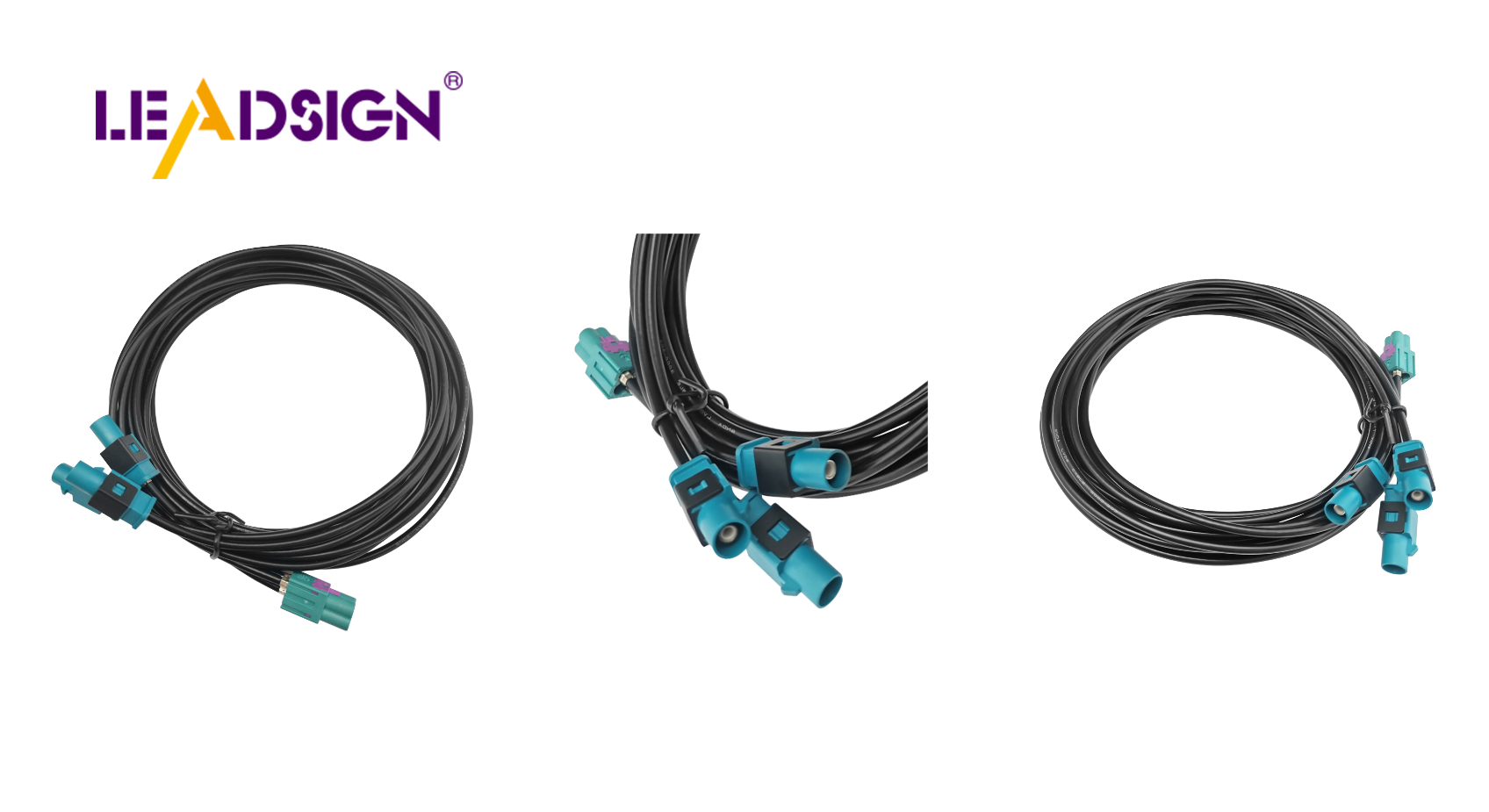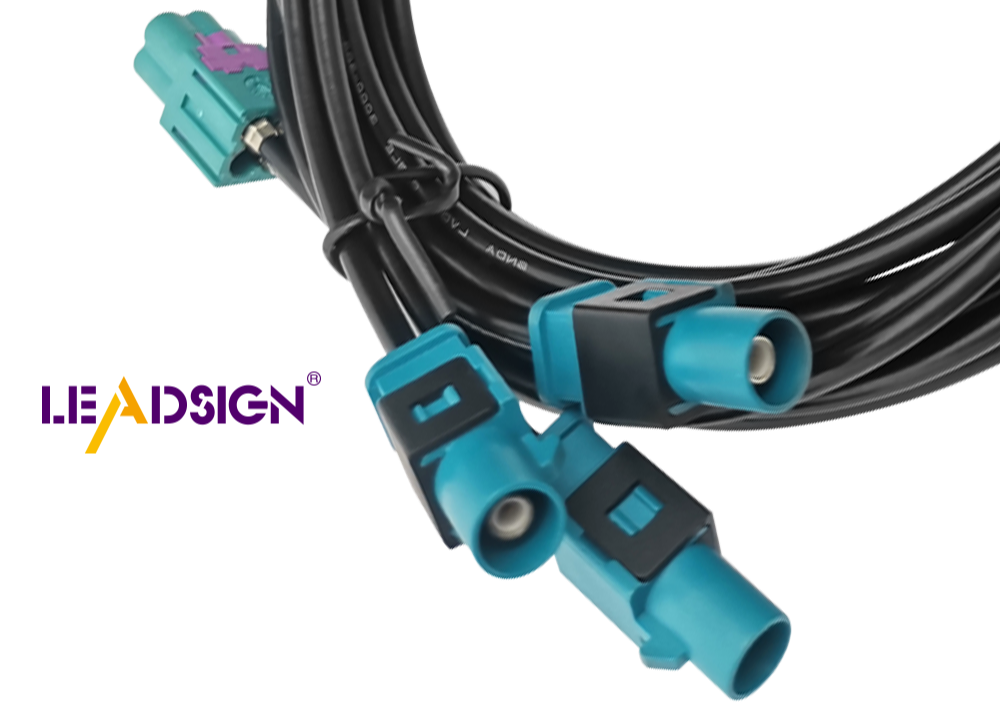How to Identify Automotive Electrical Connectors Types

Identifying the types of automotive electrical connectors you have is crucial for maintaining your vehicle's performance. Although connectors can often appear similar and lack labels, distinguishing between them is highly beneficial. It ensures that systems like GPS and music players function correctly in vehicles. Additionally, understanding the correct connector type aids in the operation of safety features such as smart cruise control and lane departure warnings, enhancing the overall safety and efficiency of cars.
Understanding Automotive Electrical Connectors
Basic Parts of Connectors
When you learn about car connectors, you'll see they have important parts. Let's look at them:
Pins and Sockets
Pins and sockets are the main parts of a connector. They help connect different car parts with electricity. Think of pins as the male side and sockets as the female side. When joined, electricity flows well. This is key for your car's electrical systems to work right.
Housings and Locks
The housing is like a cover for connectors. It protects pins and sockets from dust and water. Locks keep connections secure so they don't come apart by accident, which can cause problems. Always check housings and locks when using connectors.
Common Materials Used
Materials in connectors affect how well they work and last. Here's what to know:
Plastic
Plastic is often used for connector covers because it's light and cheap. It also insulates well. But not all plastics are the same. Good connectors use plastic that handles heat and chemicals well, keeping them stable in tough conditions.
Metal
Metal is used for pins and sockets since it conducts electricity well, which is needed for power flow. Metals like copper or brass are strong and resist rusting, making them good choices for reliable connectors.
Connector Jobs
Connectors do two main jobs in cars:
Power Transmission
Power transmission means sending electricity from the battery to things like lights or engines. Without good connectors, these systems won't work well, so keeping them in good shape helps power flow smoothly.
Signal Transmission
Connectors also send signals between electronic systems like GPS or music players in your car. Good connectors make sure signals go through correctly, improving your driving experience.
Knowing these parts and jobs helps you pick the right connectors for your car repairs or upgrades.
Types of Automotive Electrical Connectors

Knowing different car connectors helps you fix your car well. Let's look at the types you might see.
Sealed vs. Unsealed Connectors
What Sealed Connectors Do
Sealed connectors keep water and dirt out. You find them in tough spots like the engine area. They have rubber seals to block dust and moisture. This keeps them working well even in bad weather. Check for these seals when fixing your car to spot sealed connectors.
What Unsealed Connectors Do
Unsealed connectors don't have protective seals. They work where there's little exposure to elements. They're easy to connect and disconnect but need careful placement to stay dry and clean. Use them inside or in protected parts of your car.
Wire-to-Wire Connectors
Inline Connectors
Inline connectors join two wires straightly. They are simple for connecting without changing wire paths. Use them when making wires longer or fixing breaks, keeping connections secure.
Multi-pin Connectors
Multi-pin connectors handle many wires together. They're great for complex systems needing several links in one place, like dashboards with lots of electronics, grouping wires easily.
Wire-to-Board Connectors
Edge Connectors
Edge connectors link wires directly to circuit boards, compactly connecting electronic parts like radios or navigation systems, allowing easy upgrades or repairs.
Terminal Blocks
Terminal blocks connect wires securely with screws on a board, used in both simple and complex circuits, making it easy to add or remove wires as needed.
By knowing these connector types, you can pick the right one for fixing your car properly.
Steps to Identify Automotive Electrical Connectors Types
Finding out what kind of car connectors you have can be hard. But, with the right steps, it gets easier. Let's look at some ways to help you.
Looking Closely at Connectors
First, look closely at the connector. This helps you find clues about its type.
Searching for Labels or Marks
Check for any labels or marks on the connector. Makers often put numbers or names on them. These can quickly tell you the type. If you see a label, write it down. You can use this later when searching online or in books.
Checking Connector Shape and Size
Next, check the shape and size of the connector. Different ones have different shapes and sizes. Compare its shape to types you know. Look at how many pins or sockets it has too. Even small changes in shape or size mean a different type.
Using Books and Online Guides
If looking doesn't give enough info, use books and guides. They have lots of details about connectors.
Catalogs from Makers
Catalogs from makers are full of info. They list connectors by type, size, and job they do. Use the number or words you wrote earlier to search in catalogs. This helps find an exact match or something close.
Websites
Websites are also helpful tools. Sites like DigiKey let you filter choices by things like pin count or color. You can also find forums where people share tips and stories about connectors.
Asking Experts for Help
Sometimes, asking experts is best for finding out connector types.
Car Technicians
Car technicians know a lot about connectors from working with them daily. They might know your connector just by looking at it! If unsure, ask one for help.
Electrical Engineers
Electrical engineers understand connectors well too. They know technical stuff and can explain more deeply how they work in systems.
By doing these steps, you'll feel sure about finding out what kind of car connector you need.
Finding car electrical connector types might seem hard at first. But with practice, it gets easier. Look closely at connectors to learn more. Use books and ask experts if needed. Doing this helps you fix cars better. Knowing the right connector saves time and money. It also keeps your car working well. As Donna Horn said, the right connector fixes problems easily and cheaply. Keep practicing and enjoy doing a good job!
See Also
Exploring HSD Connectors in the Automotive Sector
Navigating Ford Fakra Connectors
The Significance of Fakra Connectors in Modern Cars

